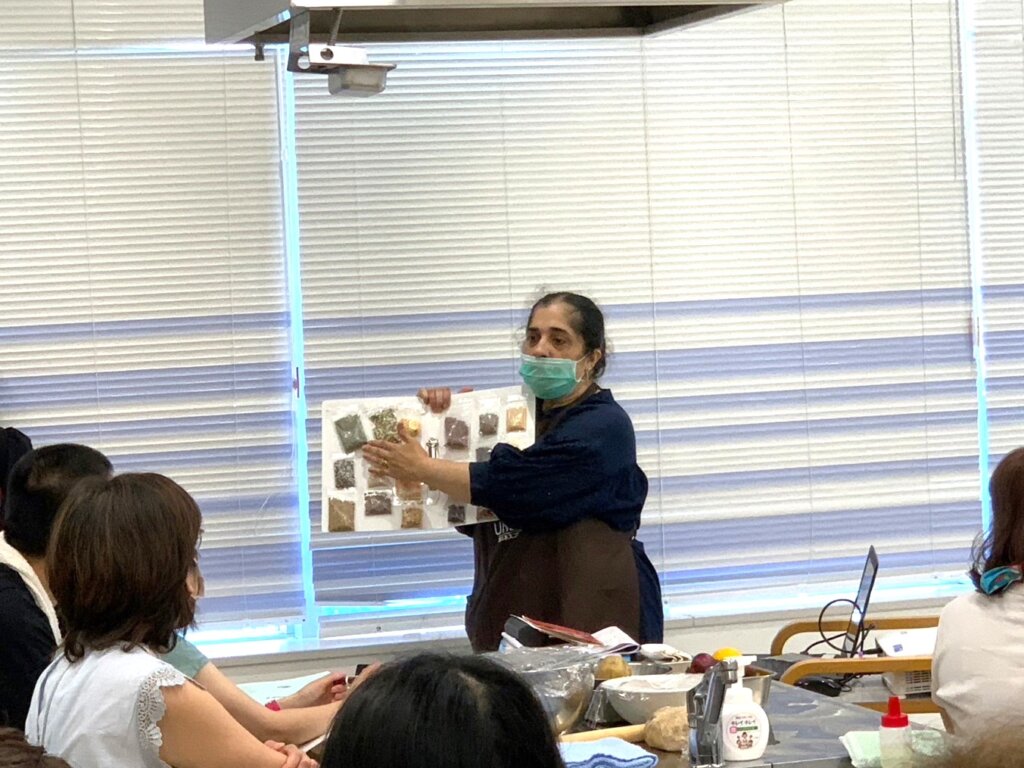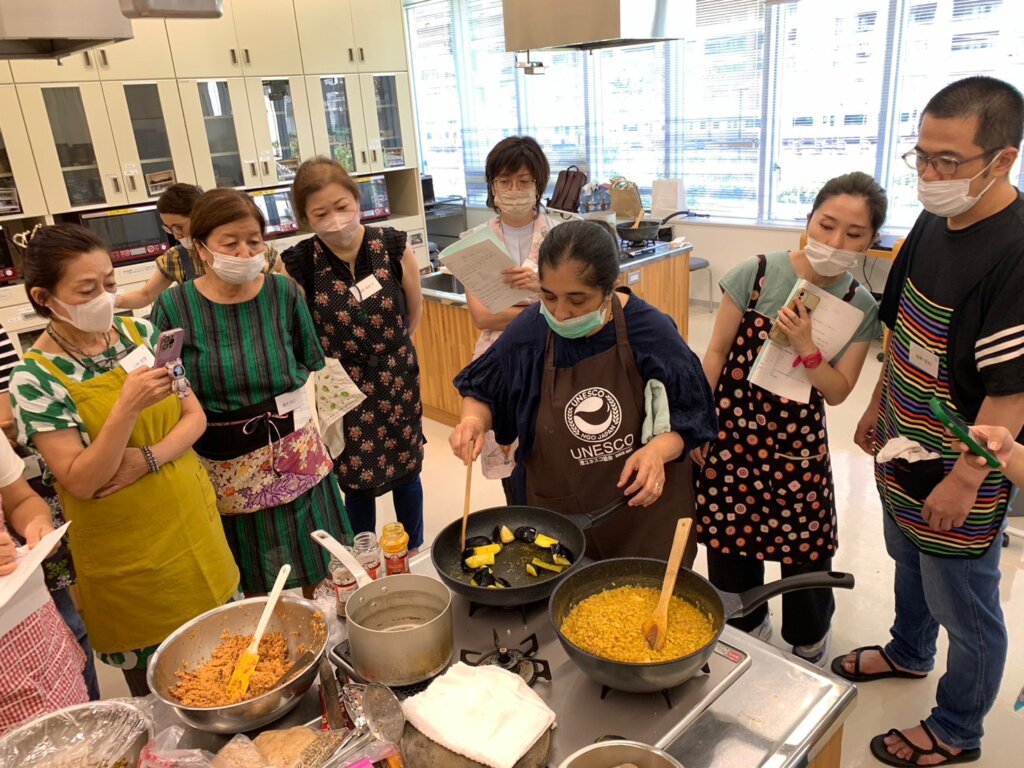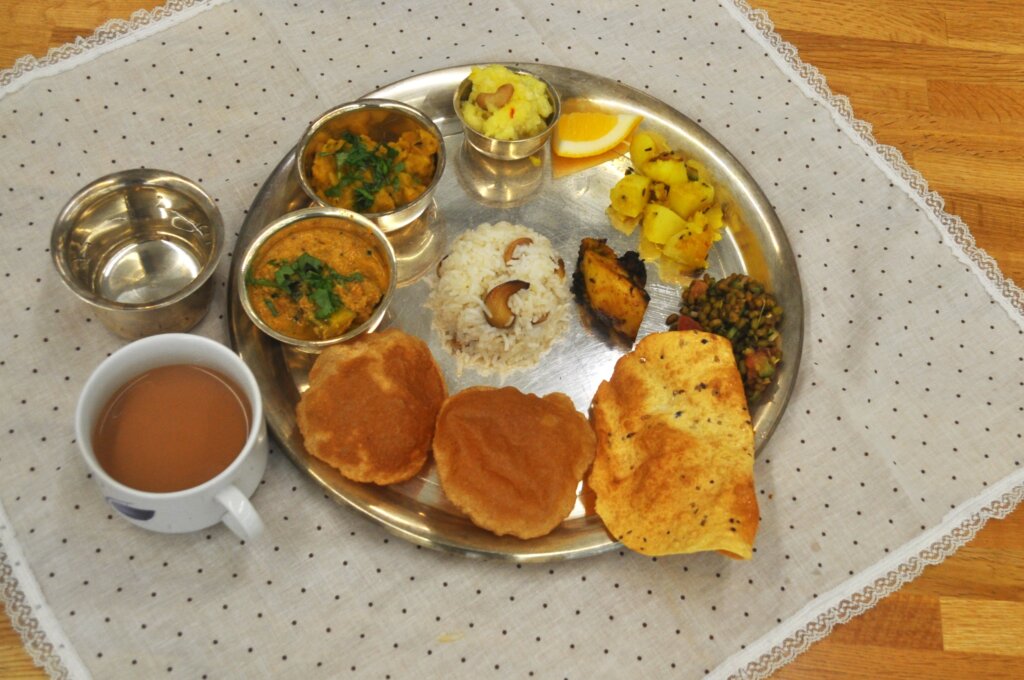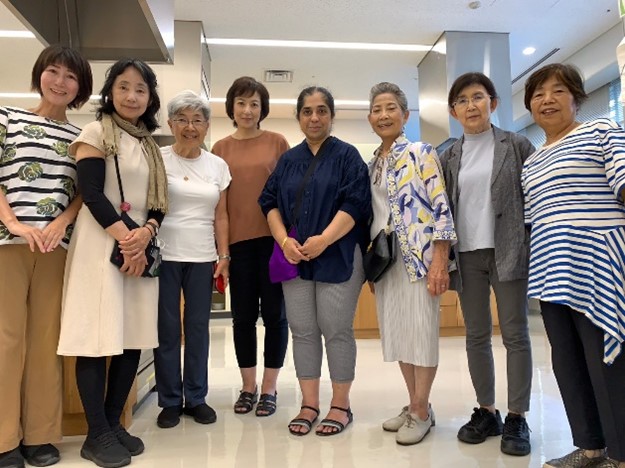World Cooking Workshop: Home Cooking of Western India
World Cooking Workshop: Home Cooking of Western India
Date: Sunday, July 30, 2023
Venue: Minato Gender Equality Center Libra Participants: 20 (including 7 members of the Cooking Committee)
Ms. Poorva Ponkshe is from Bune, Maharashtra, Western India, and came to Japan for the first time in 1993 upon her marriage. Ms. Poorva, who is fluent in Japanese, began the class by giving us a brief introduction of her country: India has the world’s largest population of 1.4 billion (28.5% of the population is aged -14, 65.8% is aged 15-64, 5.8% is aged 65 or older, and the nation’s average age is 28; This contrasts Japan’s 12.3%, 60%, 27.7%, and 48 years, respectively). The country is large (about 9 times the size of Japan), and each local region has its own language and food. Some 1,800 different dialects are spoken nationwide. The official languages are English and Hindi, and 17 languages are written on the rupee bill. In terms of cuisine, Japanese curry is quite different from Indian food. Most Indians are vegetarian and get their protein mainly from beans. There are a variety of types of rice in India, but since the outbreak of the war in Ukraine, the Indian government has banned the export of all rice except Basmati rice.


Ms. Poorva prepared a grand menu for the day, which contained such a diverse kind of spices that we were deeply impressed by her expertise:
(1) Puri: crispy fried bread, made by kneading whole flour atta with water and salt and deep frying it.
(2) West Indian stir-fried steamed potatoes: Saute steamed potatoes with cumin seeds, mustard seeds, turmeric , green chilies, coriander powder, and chili powder. Add salt and sugar, if you like.
(3) Dala curry: Boil dala with turmeric powder until soft. Put it in a pan, sauté with ghee mustard seeds, turmeric, chili powder, fresh ginger, onion, and tomatoes. Mix cumin powder, coriander powder, masala and dala. Add a little salt and brown sugar. Garnish with coriander.
(4) Sprouted salad a la India: Soak green Indian mottled beans in water the day before to let it sprout, mix it with red onion, tomatoes, cucumber, salt, and a squeeze of sugar lime.
(5) Indian Tomato Eggplant Curry: Mix tomatoes, coconut powder, and roasted peanut powder in a blender. Stew the puree with mustard seed, turmeric powder, ginger, garlic, onion, eggplant, coriander powder, and cumin powder.
(6) Softly spiced Indian butter rice: Saute basmati rice with bay leaves, cloves, and cardamom in ghee (unsalted butter) and cook it in a rice cooker.
(7) Home-made Tandoori Chicken: Chicken is prepared with lemon juice, grated garlic, tandoori chicken spice, Greek yogurt, and minced ginger. Let it sit overnight, and stir-fry in ghee.
(8) Masala Chai (Indian style milk tea): Put in a pot water, sugar, grated tea leaves, ginger, cardamom powder, and milk. Warm them.
(9) Semiya Payasam (Indian snack made from semiya noodles): Instead of semiya noodles, this time basmati rice was used. Fry rice in ghee, cook in milk with fried cashew nuts, and add cardamom powder and saffron sugar.
(10) Papadas: Fry in oil commercially dried papadas.


We all rolled up our sleeves to prepare a large number of dishes in a timely manner under the suitable guidance of Ms. Poorva, and the hall was filled with the delicious aroma of spices.
Through this Workshop, we learned not only how to cook new tasty Indian dishes. We also knew a little bit about the population issues and food problems caused by war as well. Thank you, Ms. Proova.
(Written by MATSUZAKI Kayoko, Standing Director. Translated by MIYASHITA Yukari, Standing Director.)
